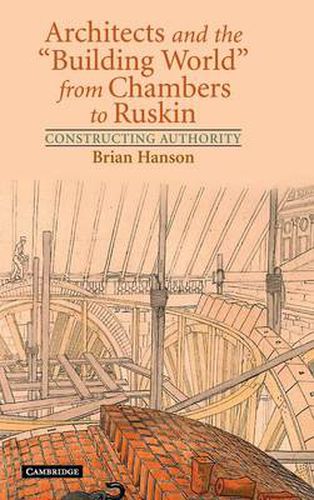Readings Newsletter
Become a Readings Member to make your shopping experience even easier.
Sign in or sign up for free!
You’re not far away from qualifying for FREE standard shipping within Australia
You’ve qualified for FREE standard shipping within Australia
The cart is loading…






This study peers behind the veil of architectural styles to the underlying social microcosm of the ‘building world’ of the eighteenth- and nineteenth-centuries, to examine how the fragile authority of the architect took root. Bringing to architectural history methods more familiar from studies of the social content of poetry and painting, Brian Hanson is able to establish new, and often surprising relationships between many of the key figures of the period - including Chambers, Soane, Barry, Pugin, Scott and Street - and to shed new light on lesser figures, and on agencies as diverse as freemasonry and magazine publishing. John Ruskin in particular emerges here in an entirely new light, as do his arguments concerning ‘The Nature of Gothic’. Following recent rethinking of the pace of industrialisation, and the dynamic between the metropolitan centres and the more slowly evolving ‘fringes’, Hanson concludes that in some respects Ruskin was closer to William Chambers than to William Morris.
$9.00 standard shipping within Australia
FREE standard shipping within Australia for orders over $100.00
Express & International shipping calculated at checkout
This study peers behind the veil of architectural styles to the underlying social microcosm of the ‘building world’ of the eighteenth- and nineteenth-centuries, to examine how the fragile authority of the architect took root. Bringing to architectural history methods more familiar from studies of the social content of poetry and painting, Brian Hanson is able to establish new, and often surprising relationships between many of the key figures of the period - including Chambers, Soane, Barry, Pugin, Scott and Street - and to shed new light on lesser figures, and on agencies as diverse as freemasonry and magazine publishing. John Ruskin in particular emerges here in an entirely new light, as do his arguments concerning ‘The Nature of Gothic’. Following recent rethinking of the pace of industrialisation, and the dynamic between the metropolitan centres and the more slowly evolving ‘fringes’, Hanson concludes that in some respects Ruskin was closer to William Chambers than to William Morris.